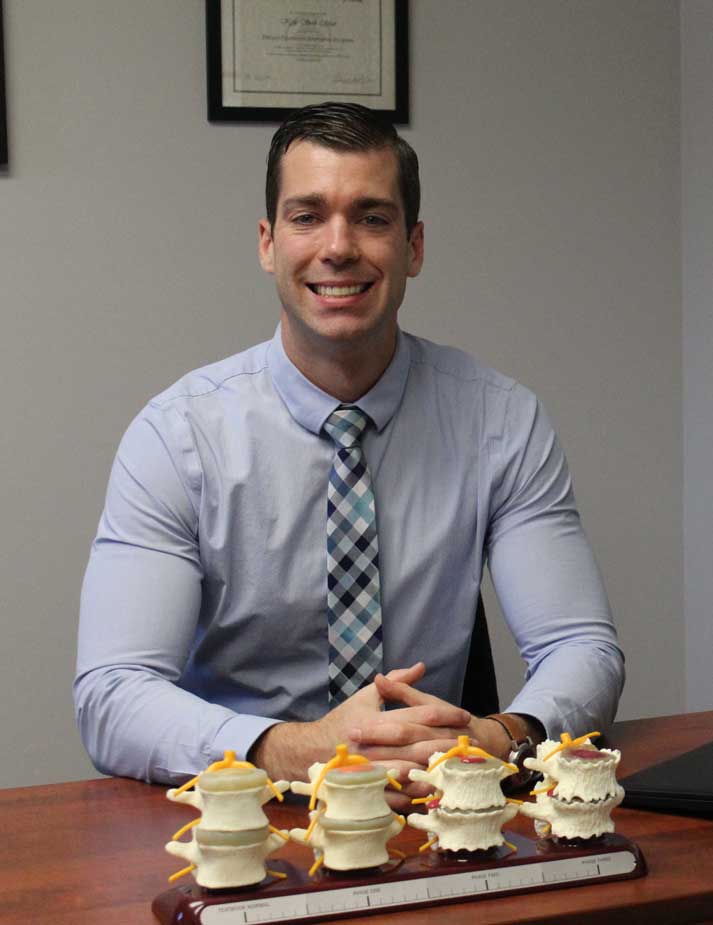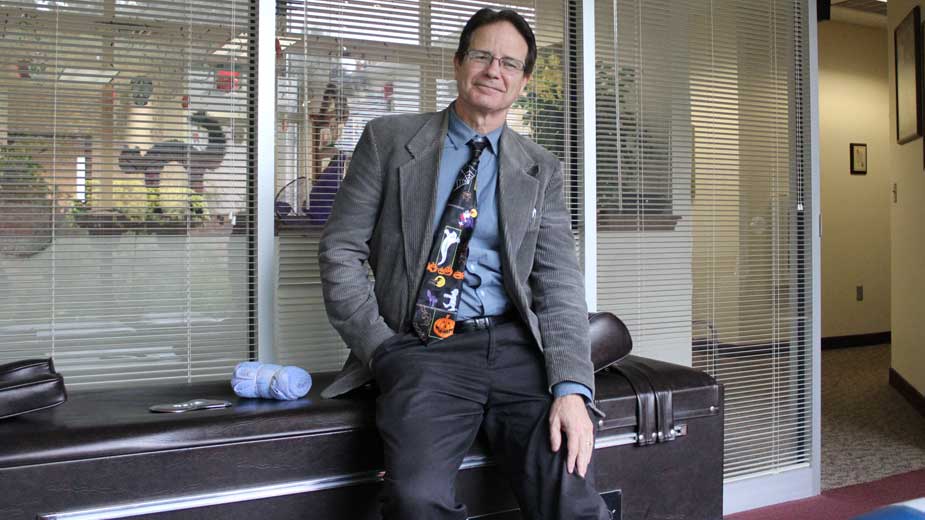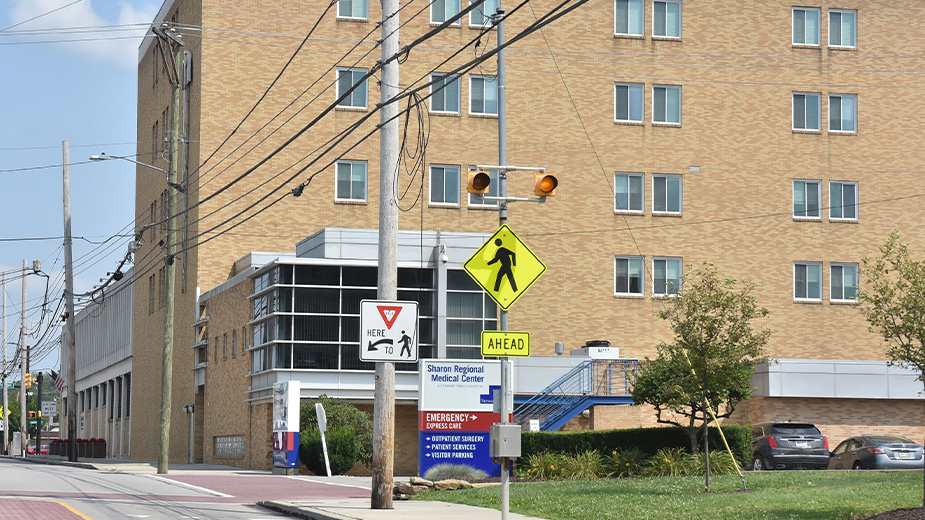Chiropractors Make Pain Relief Physical
YOUNGSTOWN, Ohio — As the national opioid crisis has taken its toll, many have taken to searching for new methods to treat pain, both patients and doctors alike. Those searches have led to a surge of new patients for chiropractors.
At its core, chiropractic care is about the spine and remedying the issues that come about as a result of parts of the spine not doing what they should do. Discs between each vertebrae can bulge or slip. Nerves that run down the spine as part of the central nervous system can be pinched or impacted, causing issues throughout the body.
The standard tool in chiropractors’ arsenal is manipulation – moving the body to alleviate stress on joints and the musculoskeletal system. Also available are techniques such as ultrasound, dry needling, moist heat, infrared and nonmedical supplements, says Dr. Patrick Ensminger of Trumbull County Chiropractic, Howland.
“We don’t just manipulate the spine. If you come in with carpal tunnel syndrome, I’ll manipulate your wrist and elbow, treating you nonsurgically,” he says. “It’s based on the premise that a joint has lost its normal function, perhaps for long enough that you’re starting to get muscle pain, joint pain or – if nerves in the spine get pinched – neck, arm or leg pain.”
The process, he continues, isn’t as painful as first-time patients often imagine.
“You might feel a small popping sensation in the joint and the result of that is it moves 20%, 30% better than before,” he says. “If it’s a chronic problem, we may repeat that eight times and see what your outcome is. It could be better forever or months at a time, all without medications.”
It’s that final point that Ensminger and other chiropractors have taken to promoting in recent years as the opioid epidemic took tens of thousands of lives this decade. Chiropractic care sits a bit outside the traditional medical spectrum. Chiropractors don’t write prescriptions and approach care from the physical side, rather than the medical.
“We need to get away from the mentality that medicine cures all. We’re awesome at medical care, but we can’t keep treating these issues with pills. It isn’t working. Chiropractic should be that alternative and you’re seeing more people seek it out,” says Dr. Chris Raymond of Raymond Chiropractic in Austintown.
And with that approach, chiropractic care has found itself a role in combating the opioid epidemic. Earlier this year, medical journal BMJ Open published a retrospective study of 216,504 patients seeking care for lower back pain between 2008 and 2013. It found that those who first went to a chiropractor were 90% less likely to be prescribed opioids.
“It didn’t matter if they failed chiropractic care and went onto other care, they were still less likely to receive opioids,” Ensminger says. “It can be easy to say, ‘You’re hurt? Take this.’ When you’re working with physical medicine, you have to figure out how to get the painful part to function better.”
Ensminger serves as chairman of the Ohio State Chiropractic Association and co-chairman of its opioid task force. When the Centers for Medicare and Medicaid Services sought input in developing strategies to reduce the prescription of opioids, the state association submitted a proposal that included first referring patients with back pain to chiropractors and fully covering chiropractic care, rather than just the adjustment.
As the Mahoning Valley’s population has gotten older, observes Dr. Gerald Dickson of Gentle Chiropractic in Howland, the number of patients on Medicare has risen. Today, he estimates 30% of his clientele are on Medicare, double what it was when he started his practice.
For those not covered by Medicare, he says that insurance coverage, when it’s available, can be adequate. If a plan covers 12 sessions per year, Dickson says it usually takes half that to either treat a patient or refer them elsewhere in the health-care system.
“If someone’s coming in off the street with a lot of pain, we’d do twice a week for maybe two or three weeks and then once a week for two or three weeks,” he explains. “It’s usually six treatments, which means you have six in the pocket for later. But that older population gets 24 visits a year. I’ve never seen a client that many times in a year.”
Beyond older patients, area chiropractors have found patients coming from across the spectrum: young and old, blue collar and white collar. At 330 Chiropractic in Boardman, Dr. Kyle Muir has a focus on maternal and pediatric care. For expecting mothers, his use of the Webster Technique helps ease pain leading up to and during delivery.

“It primarily focuses on the pelvic structure – ligaments and muscles. There are three aspects of difficult labor: power, passage and passenger,” he says. “Power has to do with muscles; mom has to push the baby out. In the pelvis and uterine system, if the nerves are getting pinched, you don’t get adequate supply which makes contraction strength go down.”
The technique also helps align the spine to allow as much movement as possible during birth – the “passage” tenet – which in turn allows the fetus to adjust itself into proper alignment, he says.
When it comes to children, Muir adds that ensuring correct development through the teenage years can help prevent issues further down the road.
“The development of the spine, 70% of that is between birth and 17,” he says. “If you’re playing football or other sports and have injuries that your body grows into, it’s harder to fix when you’re 40 or 50 versus when you’re 12 or 15.”
And when it comes to adults, the chiropractors agree that office workers are often the ones that have musculoskeletal problems that take longer to fix. Whereas blue-collar workers may have injuries stemming from repetitive motions or a one-off injury from their job, office workers find themselves in positions the body wasn’t meant to be in.
“It was meant to stand, run, walk, crouch. Then all of a sudden, we decide we’re going to spend all day with our glutes planted, back upright, feet on the ground,” Ensminger says. “That’s coupled with the fact that most of us shift our center of gravity forward and turn all around to work at a computer.”
Movement throughout the day is key to avoid back problems, adds Raymond, even if it’s standing up and taking a lap around the office a few times a day.
“Sitting in an office chair is bad. Get up and do a lap around the office or go to the water fountain to stretch those hamstrings and open up those hip flexors a bit,” he says. “I’ve helped incorporate some techniques [at businesses] for proper lifting and stretching, kind of a preshift routine. We said, ‘Hey, come in 10 minutes early and let’s go through a quick dynamic set to get the blood flowing.’ If you’re doing that, it keeps you moving. Your lower back is not made to just sit there.”
Pictured above: Dr. Patrick Ensminger
Copyright 2024 The Business Journal, Youngstown, Ohio.



